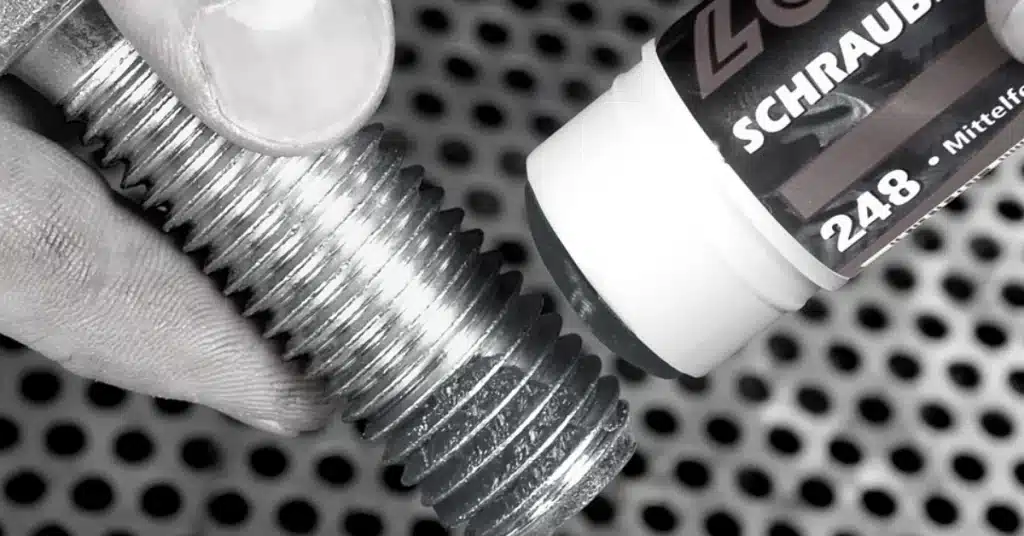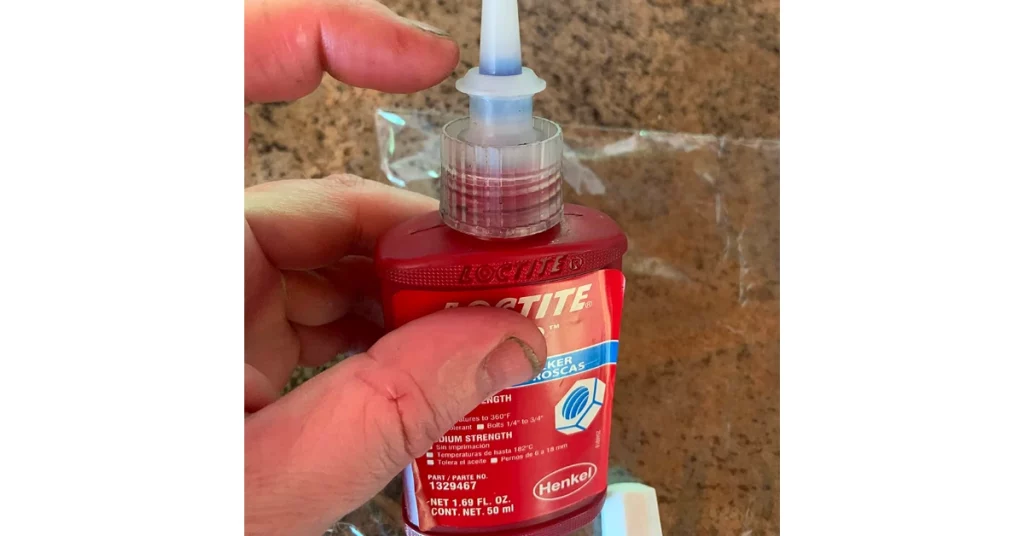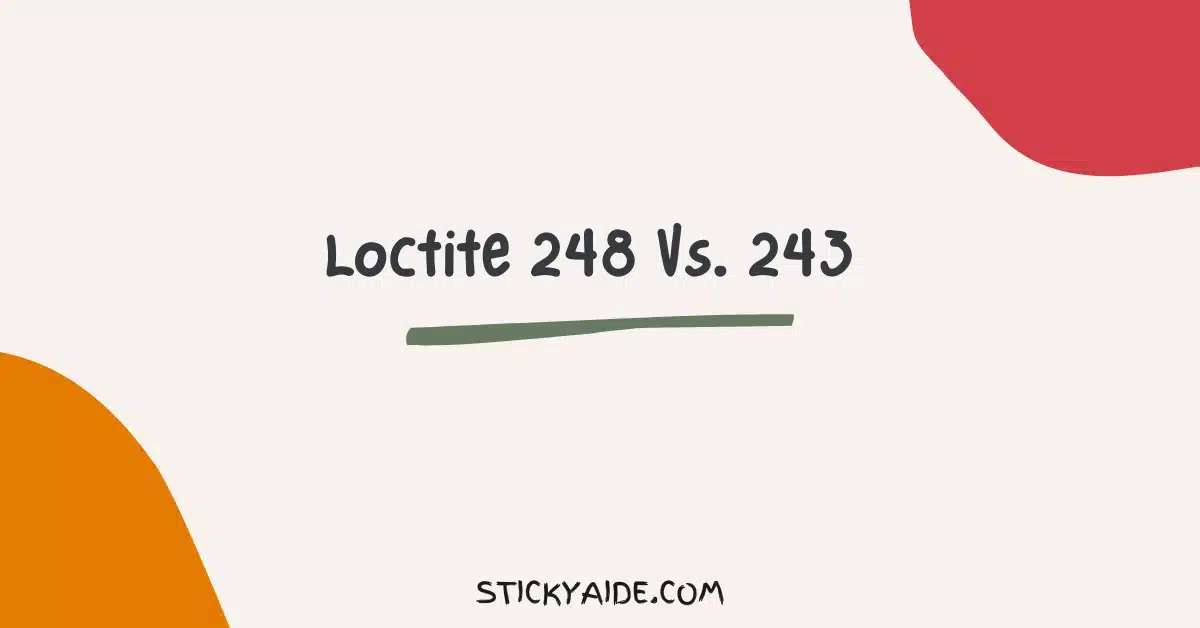If you are looking for a threadlocker that can prevent your bolts and nuts from loosening due to vibration or shock, you might have heard of Loctite 248 and Loctite 243.
Loctite 248 and Loctite 243 are both excellent choices for medium-strength thread-locking applications on all metals. But it takes just four minutes for Loctite 248 to set up and 10 minutes for Loctite 243.
In this Loctite 248 vs. 243 battle, I will help you to choose which one is best for you.
Read More: Loctite 248 vs. 242
Loctite 248 Vs. 243
Overview of Loctite 248

Loctite 248 is a medium-strength threadlocking adhesive that works on all metals, including passive metals such as stainless steel, aluminum, and plated surfaces.
It prevents loosening of bolts, nuts, and studs caused by vibrations. In addition, it can withstand moderate chemical exposure and temperatures up to 300°F (150°C).
Loctite 248 is a stick-type adhesive that’s easy to apply, especially in hard-to-reach areas and overhead applications. It sets up in just four minutes, while Loctite 243 takes 10 minutes to set up.
Loctite 248 also has a lower breakaway torque than Loctite 243, which means it is easier to remove with hand tools if needed.
Read More: Loctite 246 Vs. 243
Overview of Loctite 243
Loctite 243 is also a medium-strength threadlocking adhesive that works on all metals, including passive metals such as stainless steel, aluminum, and plated surfaces.
It prevents bolts, nuts, and studs from becoming loose due to vibration by securing and sealing them. Moreover, it is resistant to mild chemicals and temperatures up to 300°F (150°C).
Loctite 243 comes in liquid form, which means it fills larger gaps between threads than Loctite 248.
Loctite 243 also has a higher breakaway torque than Loctite 248, which means it is more resistant to loosening. It has a longer shelf life than Loctite 248 (24 months vs. 12 months).

Read More: Green Loctite vs. Blue
Comparison Between Loctite 248 and Loctite 243
| Feature | Loctite 248 | Loctite 243 |
| Form | Stick | Liquid |
| Strength | Medium | Medium |
| Setting Time | 4 minutes | 10 minutes |
| Breakaway Torque | 17 Nm | 26 Nm |
| Temperature Resistance | Up to 300°F (150°C) | Up to 300°F (150°C) |
| Chemical Resistance | Mild | Mild |
| Shelf Life | 12 months | 24 months |
Which One Should You Use? Loctite 248 or Loctite 243?
It is excellent to use Loctite 248 and Loctite 243 on all metals for medium-strength thread locking applications. Both offer reliable performance and protection for threaded fasteners.
If you want a threadlocker that is easy and clean to apply, sets up quickly, and can be removed easily if needed, you might want to go for Loctite 248.
Loctite 248 is ideal for applications where you need to apply the threadlocker in hard-to-reach areas or overhead positions. It is also more convenient to carry around in your toolbox or pocket.
If you want a threadlocker that can fill larger gaps between the threads, has a higher resistance to loosening, and has a longer shelf life, you might want to opt for Loctite 243.
Loctite 243 is ideal for applications where you need to fill larger gaps between the threads or where you need a higher breakaway torque. It is also more economical and has a longer storage duration.
Is Loctite 248 Removable?
Is Loctite 248 Safe on Plastic?
To ensure compatibility with the specific plastic you are working with, it’s recommended to test a small, inconspicuous area first.
Alternatively, you may consider using a plastic-safe adhesive or threadlocker, such as Loctite 425, specifically formulated for use on plastic components. Always follow the manufacturer’s instructions and recommendations for the best results.
Can I Use Loctite 243 on Plastic?
However, there is a risk of stress cracking or other adverse effects on some plastics when using threadlockers like Loctite 243.
To ensure compatibility with the specific plastic you are working with, it’s recommended to test a small, inconspicuous area first. If you require an adhesive specifically designed for plastic components, you may want to consider using a plastic-safe adhesive or threadlocker, such as Loctite 425. Always follow the manufacturer’s instructions and recommendations for the best results.
Last Opinion
Loctite 248 and Loctite 243 are both high-quality threadlockers that can help you secure and seal your threaded fasteners. Here, I compared Loctite 248 Vs. 243, to give you an overview of them.
You can choose Loctite 248 if you want a stick threadlocker that is easy and clean to apply, sets up quickly, and can be removed easily if needed.
You can choose Loctite 243 if you want a liquid threadlocker that can fill larger gaps between the threads, has a higher resistance to loosening, and has a longer shelf life.

